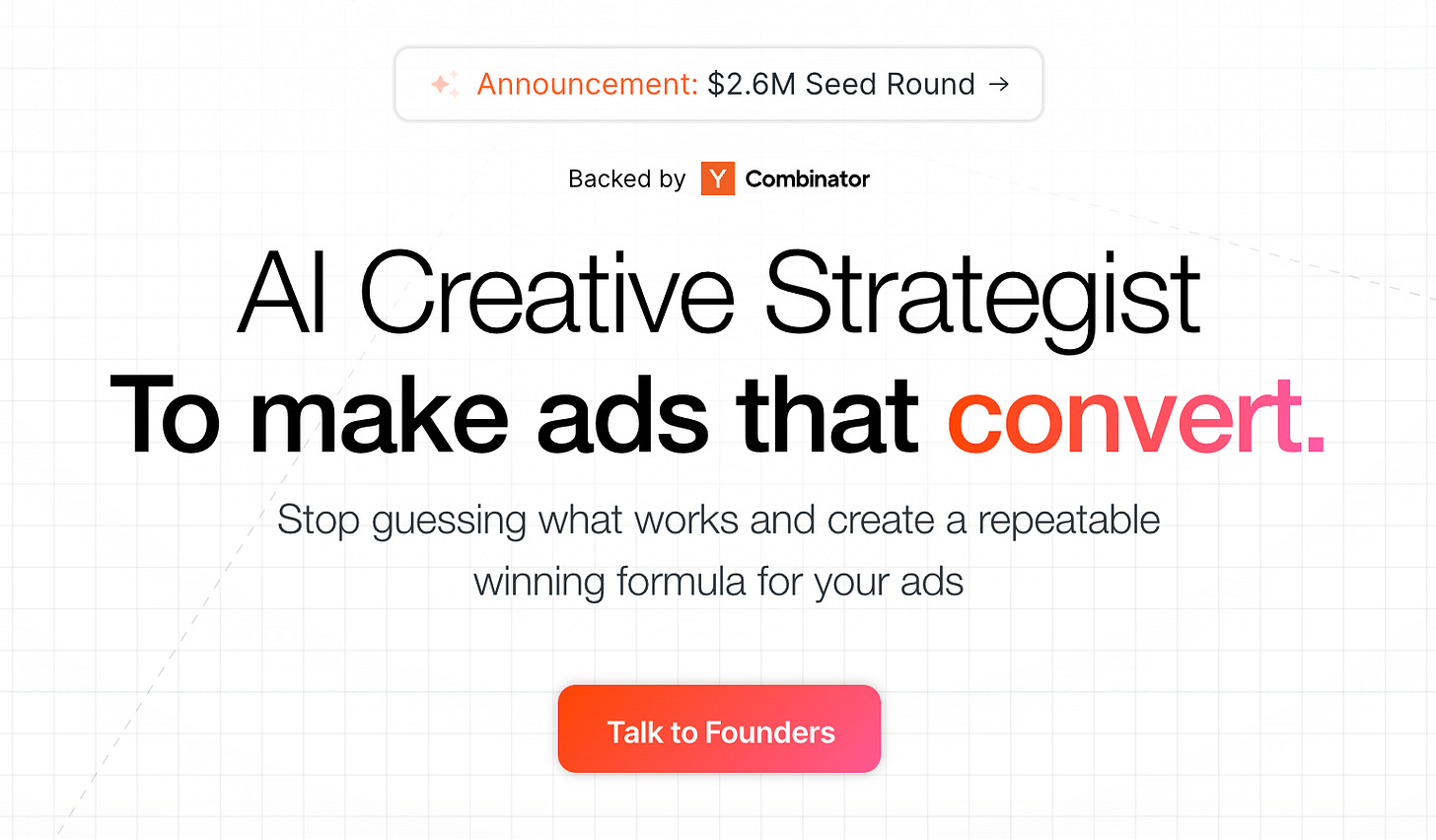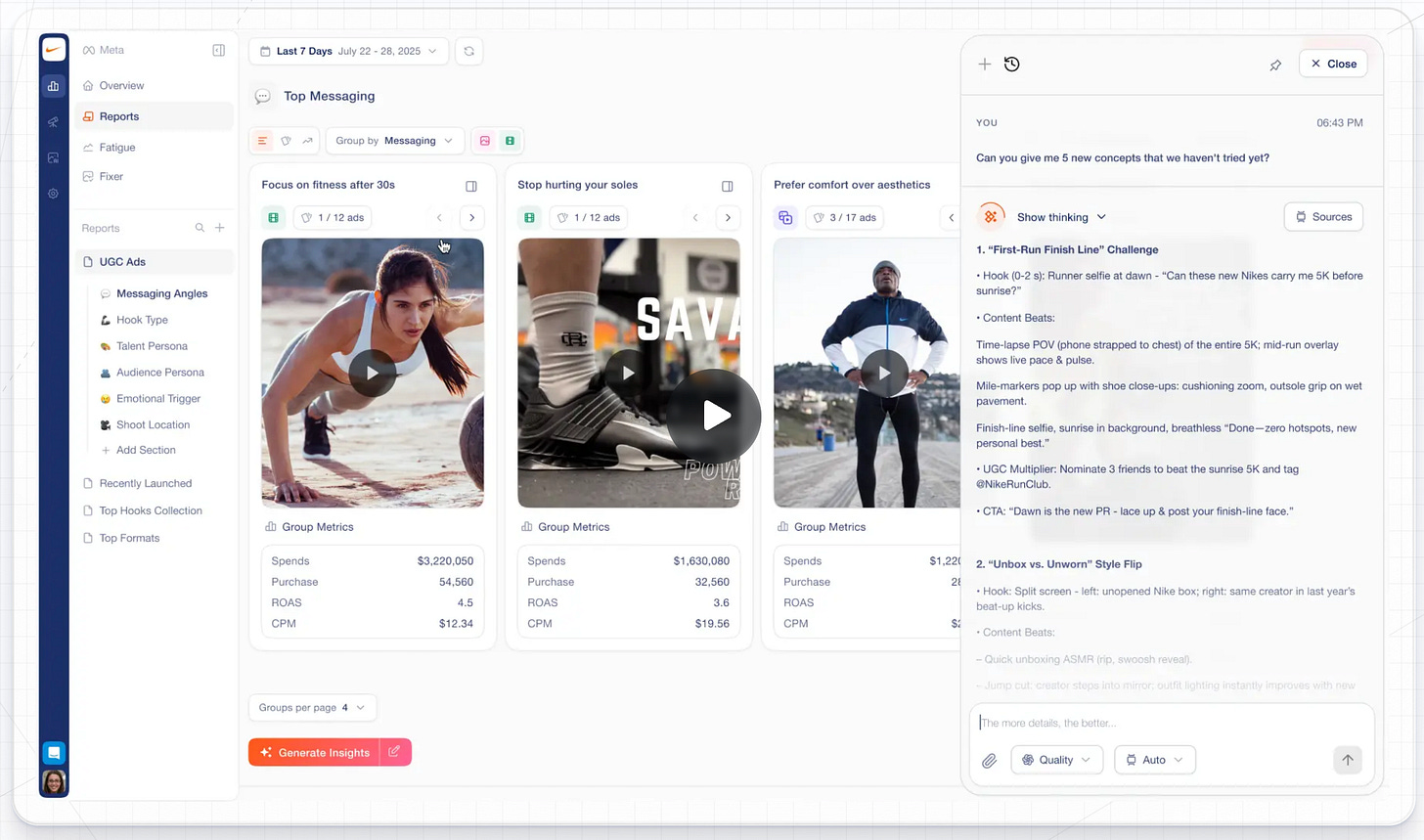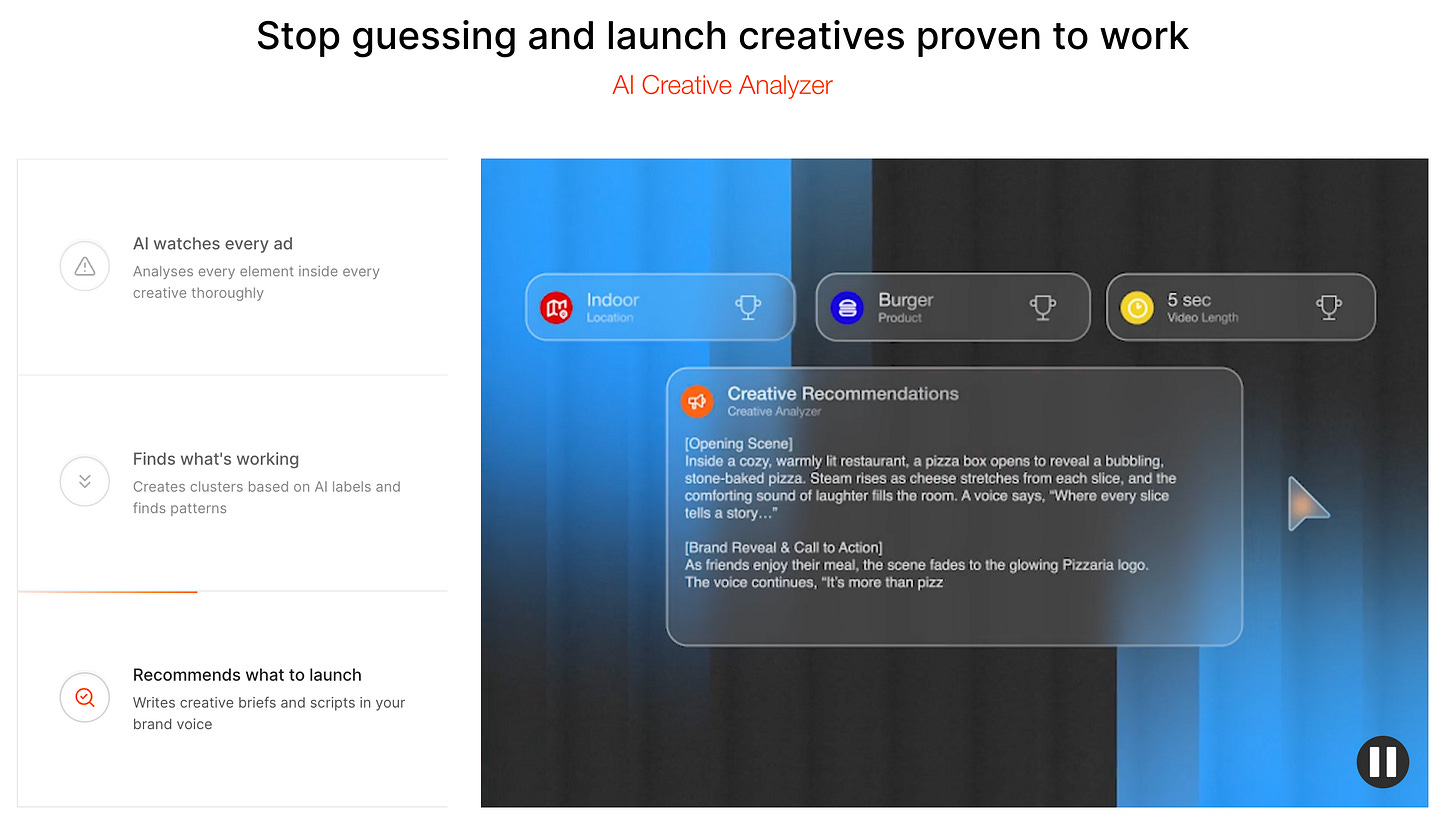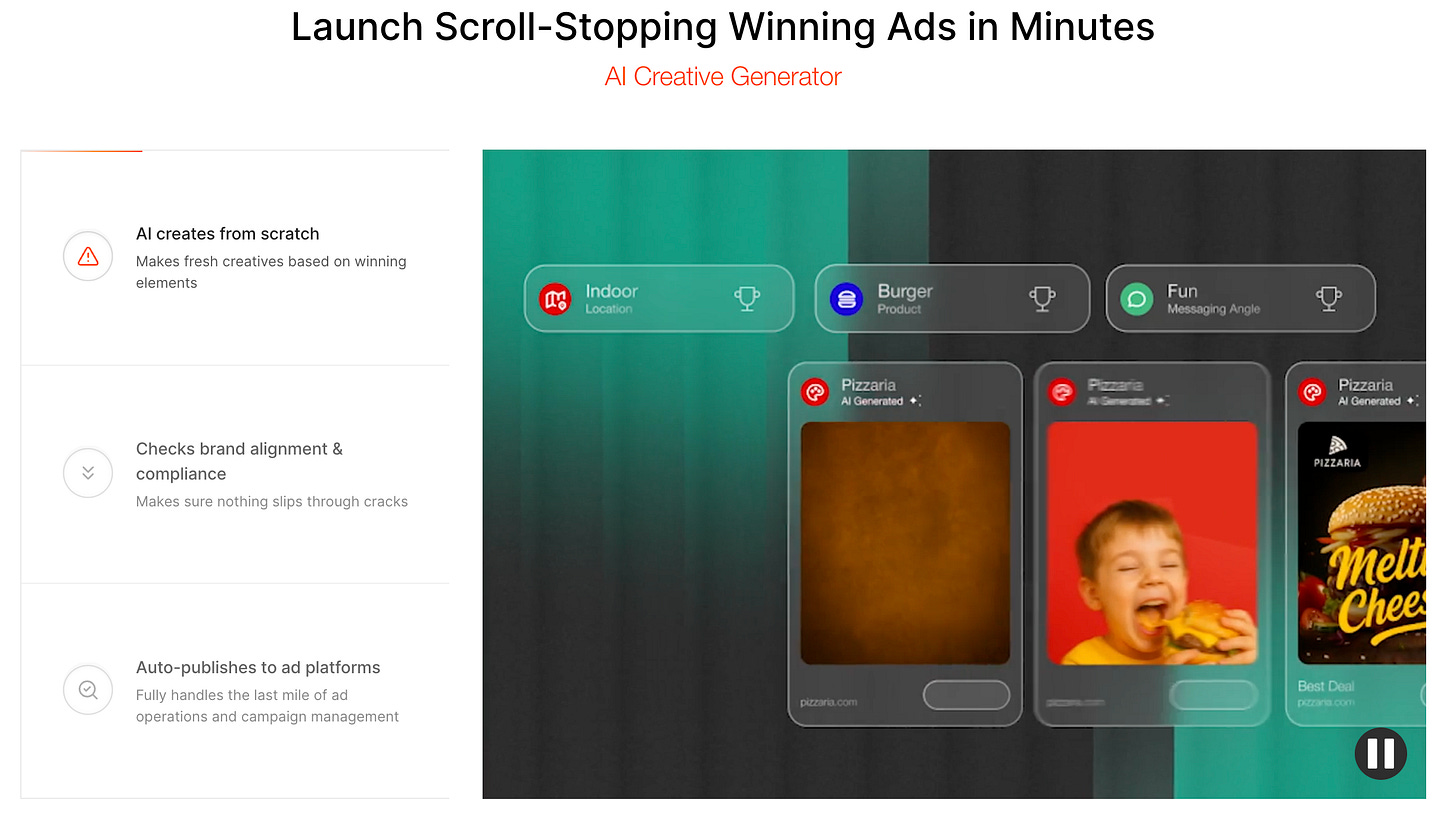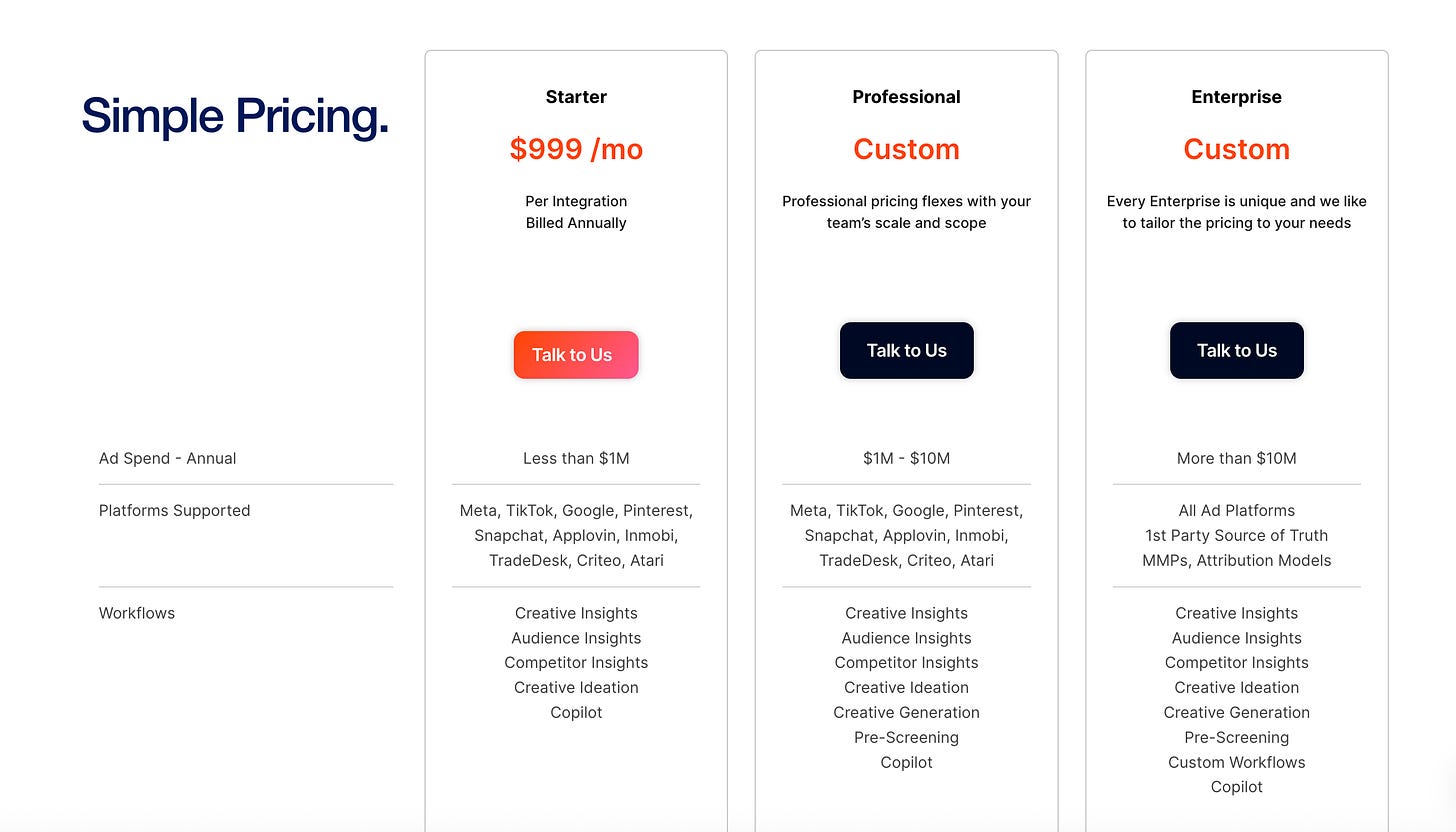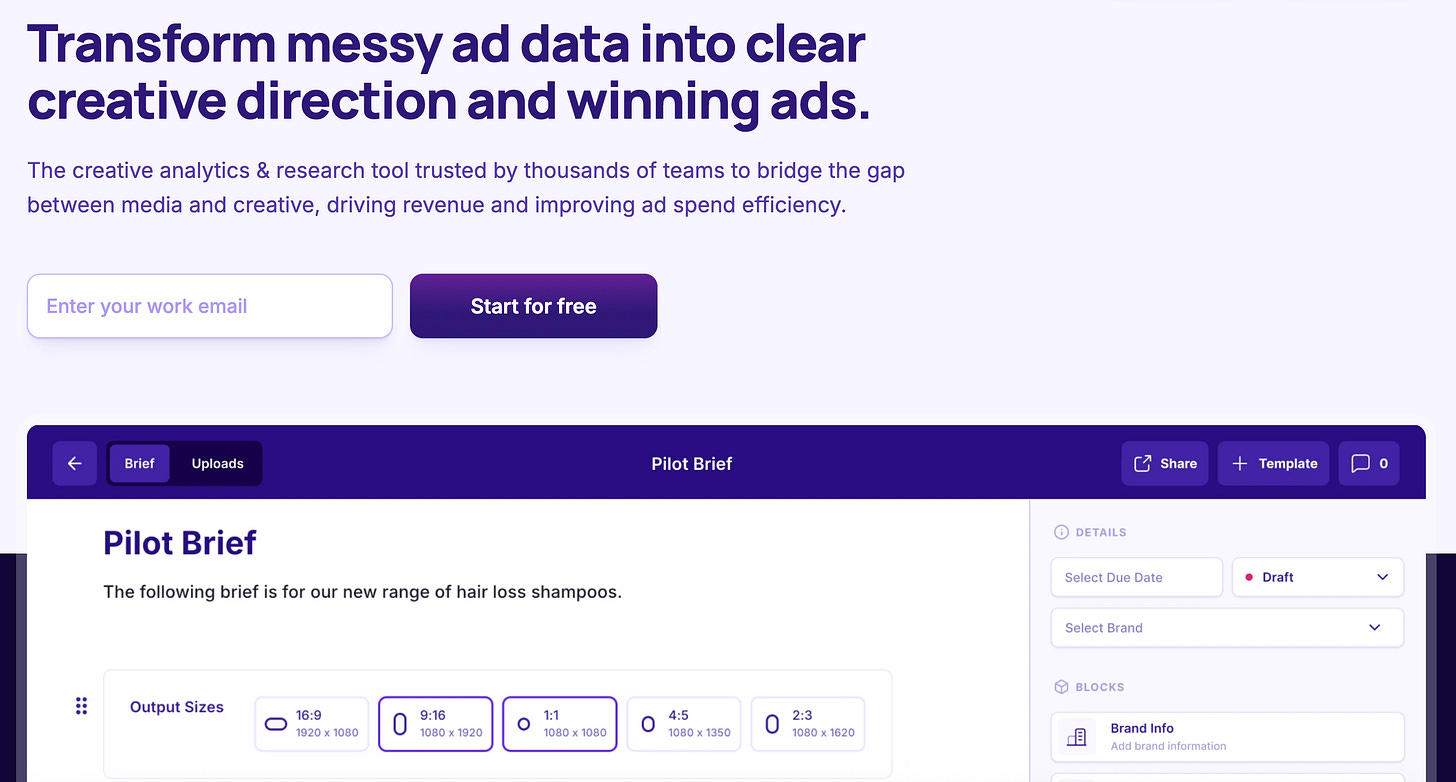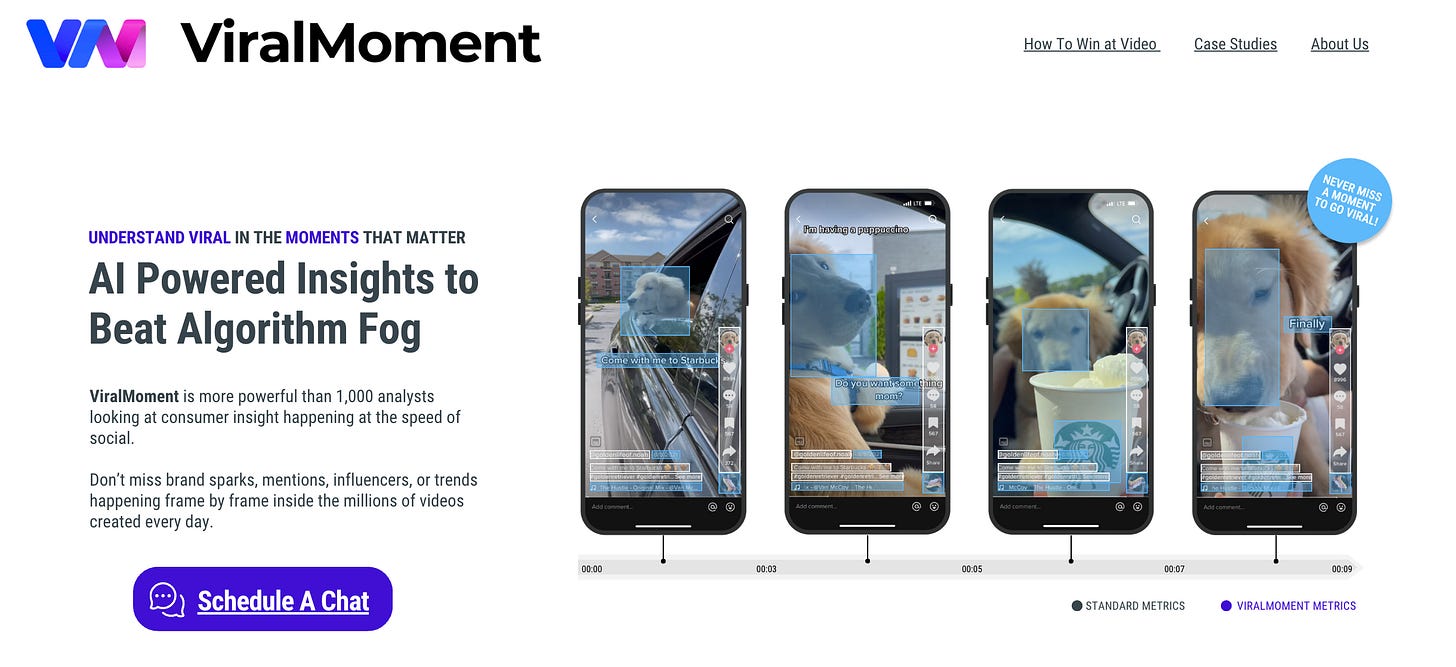Creativity on Command
Today’s featured startup is reinventing ad creation by turning human insights into automated campaigns.
Project Overview
GetCrux has built a “creative AI strategist” designed to automatically generate high-converting ads that drive purchases.
To see how it works, look at one of GetCrux’s clients who managed to reduce their customer acquisition cost by 10% in just a month. Even more impressive, they scaled their ad reach by 50% — despite already running sizable budgets. And launching new campaigns went from taking 10 days to less than 48 hours, a huge improvement.
First, GetCrux’s AI analyzed the client’s past ad campaigns to identify what worked best and why — looking for recurring elements in targeting, messaging, emotional hooks, and video structures.
Next, the AI examined competitors’ ads to find creative angles the client hadn’t tried yet.
Then it dug into social media comments and online reviews of the client’s products to surface positive and negative points — what customers liked, disliked, and what raised objections or doubts.
Using all this data, the AI generated over 500 creative assets, testing different designs and formats based on hypotheses of what might convert well. The client’s marketing team reviewed these creatives and selected the most promising ones.
The approved creatives were then launched automatically by the AI, which set targeting and test budgets, tracked performance, and turned off underperforming ads. The top-performing creatives were allocated a bigger share of the pre-defined ad budget.
Beyond campaign automation, the platform includes an AI assistant that can respond to any ad-related question or request — like “what creative angles work for my competitors?”, “which explainer videos perform best for me?”, “create 5 static ad concepts based on last week’s user comments”, or “write a 30-second script for this new product”.
GetCrux has more than a handful of customers already, despite its pricing being far from cheap.
The basic plan starts at $999/month for one ad channel, billed annually. For pricing on advanced features, you’ll need to contact the startup directly.
GetCrux went through Y Combinator in winter 2024, raising $2.6 million afterward. But it announced the launch of its new platform version on YC’s website only recently.
What’s the Gist?
Last fall, I covered GetCrux when it launched an earlier version of its platform focused on analyzing ad campaign performance.
Even more interestingly, just last winter during Y Combinator, their platform was something entirely different: an AI tool for analyzing corporate data. They arrived at their current product after 15 prior pivots!
It looks like the pivot frequency has slowed down now that they’ve found a working concept. But even in the six months since my last look, they’ve rolled out a new product with a new positioning — though it clearly builds on past work related to ad performance analysis.
This pace of rapid hypothesis testing and iteration makes startups that spend years trying to get a single product to work — while only “improving” initial functionality — look almost quaint by comparison.
Zooming back in on AI-generated ads: several other startups are also working on this opportunity.
MagicBrief raised $2 million for an AI platform that analyzes why ads work for clients and competitors, helping customers create new, data-backed ad creatives. In June this year, MagicBrief was acquired by Canva.
In early 2024, ViralMoment raised $2.5 million to analyze viral TikTok videos and understand what makes them take off — insights that can help brands make their own viral content.
Ramdam built an AI engine analyzing influencer ad videos. What’s clever is that Ramdam integrated this AI directly into their influencer marketplace, helping brands write briefs, review influencer submissions, and even rate videos for effectiveness.
This allows advertisers to boost both the speed and quantity of influencer ads without sacrificing performance.
Key Takeaways
Some still think creating successful ads is an art. But it has already become a craft — many marketers are openly inspired by what’s working elsewhere. Online advertising makes this especially obvious: it’s cheap to test many variants and keep what works.
And if ad creation has become a craft, it should be automated by AI. While AI might not match human artistry, it’s already a capable craftsman: it can analyze countless ads, identify patterns, generate variations, and test them — tirelessly, continuously, at any scale, and often cheaper than humans doing the same.
That said, this straightforward approach only works well when there’s enough existing data — like past ads and competitor campaigns — for the AI to analyze. Inventing something truly new from scratch is still a big weakness for AI.
But that’s why combining humans (who invent fresh ideas) with AI (which tests, iterates, and scales those ideas) makes sense. This “hybrid” model is exactly how the AI ad agency Valid (see my write-up) operates: humans engage clients and set creative briefs, AI produces options, and humans then refine the results. Valid has raised $7.3 million.
So the clear path forward is developing AI platforms that automate the craft of ad creation — and GetCrux is a perfect example of what that can look like.
More broadly, the same approach can be applied to other business “arts” that are ready for automation. It’s no coincidence we’re seeing so many AI-powered sales tools today — even though people still call it the “art of selling.” What other applied business “arts” do you think are ripe for AI automation?
Company info
GetCrux
Website: https://www.getcrux.ai/
Total funds raised: $2.6 million over 3 rounds



